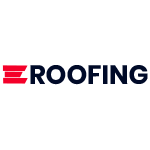The roofing industry has witnessed many changes in recent years as we move towards a more sustainable future. With many innovations to choose between, it’s easier than ever to create beautiful roofs while contributing to the environment.
If you own a roofing business, you’ll know that your success depends on giving each customer what they want, and that’s why it’s essential to understand the latest trends.
In this guide, we’ll reveal innovations and trends that are changing the industry.
Adding greenery to roofs
Did you know that one in eight people in the UK don’t have a garden? The Office for National Statistics highlights a common problem in large cities. People with flat roofs can inject nature into their homes by adding greenery.
Even if you can’t use the roof as a garden, hiring a professional to add soil and plant life gives the roof a protective layer, reducing energy consumption.
Green roofs are highly popular in the US, and we can expect to see more of them in the future.
Rooftop decks
Low-maintenance, relaxing and popular in the USA, rooftop decks are making a name in the UK. While green roofs are beautiful, they also require maintenance, but decking is a stress-free solution that gives you an outdoor space to relax.
Flat roofs
Many people opt for flat roofs over traditional sloped roofs, and the demand continues to grow (Total Contractor). While the style has always been popular for commercial buildings, it’s also making a comeback in residential homes.
There are plenty of reasons to choose these roofs, including:
- Aesthetic appeal: Sloped roofs have a traditional aesthetic, while flat roofs are ideal for contemporary design. The clean and simple look can be beneficial for modern homes.
- Space: Traditional sloped roofs leave little room for the imagination, while flat roofing allows for a garden or outdoor space.
- Affordability: Flat roofs are usually less expensive as they require fewer materials, and you can save on labour costs, too.
- Flexibility: If you plan to adapt your home in the future, flat roofs can make the process easier.
If you have a warm, flat roof, you might not need roof vents, but specialists recommend them for cold, flat roofs as they’re more susceptible to condensation.
Metal roofs
Traditionally associated with industrial and agricultural buildings, metal roofs are becoming a viable option for residential properties due to their resistance and durability.
Let’s look at why these roofs are so popular:
- Materials: Copper, zinc, aluminium and steel are popular options for metal roofs, with some materials being cheaper than others. This gives you more flexibility.
- Longevity: Did you know a metal roof can last up to 70 years? Traditional asphalt only lasts up to 20.
- Durability: Metal is one of the most durable materials and can handle vast amounts of rain or snow.
- Sustainability: As metal is a highly sustainable material, it often means you can recycle it, which is much better when compared to other materials.
While the common belief is that metal roofing can be unattractive, technological advances now mean it can mimic traditional tiles and replicate the look of slate and wood, making it an excellent low-maintenance option.
Composite roofing
As people seek more sustainable construction solutions, synthetic materials are gaining popularity. Also known as composite roofing, these solutions are more affordable and can also reduce our reliance on non-renewable resources.
Fibreglass, plastic polymers and rubber are the most popular options, and environmental activists love them, as composite roofing can be made from recycled plastic, reducing our carbon footprint.
Steps to reduce moisture
Roofs protect a building’s interior from leaks, and even a tiny crack can cause water to penetrate throughout your property. When this happens, it can cause the roof to lose its aesthetic appeal and increase energy consumption.
Along with using lead flashing to create a weatherproof seal, people are also exploring other options for moisture reduction. They include:
- Aluminium Gutters: As a heavy-duty material, aluminium can hold its own against heavy water flow and is easy to clean, meaning you can remove blockages.
- Roof Crickets: If you have a chimney or skylight, roof crickets will prevent water damage by moving it away from the sections.
- Cover Boards: A severe storm can cause leaks, but adding a polyiso cover protects your property when the roof leaks.
Solar panels
Solar panels aren’t a new trend by any means, but the rise in energy bills means they’re experiencing a renaissance.
The cost of living crisis contributes to more people seeking sustainable solutions that save on electricity, and solar panels can save the average household up to £400 annually (Money Supermarket).
Solar panel technologies are also advancing, with tandem solar cells promising to convert more sunlight than traditional cells, which means more savings.
Anti-solar cells are also becoming a viable option, and they can generate power during the nighttime. These advances mean more people will access solar panels and look forward to the savings they offer.
Integrating technology
Technology continues to integrate with daily life and various household applications. Now, it’s facilitating advancements in roofing technology, including drone assessments that can identify potential issues with the roof and save on labour.
Solar technology is changing roof vents, while sensors can send instant alerts for leaks or excess moisture.
All of these applications can enhance the longevity of any roof and allow contractors to diagnose issues before they worsen.
Final thoughts
We live in a world where anything is possible, and our technological advancements mean people can look forward to cost-effective roofing solutions that are sound investments.
Whether you want to focus on sustainability, give yourself a beautiful outdoor space or move away from traditional designs, the range of materials available means anything is possible.
There’s never been a better time to explore your options with newer materials. So, get creative and look forward to more flexibility without compromising structural integrity.







